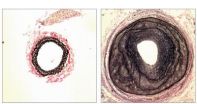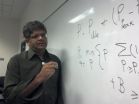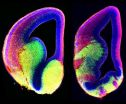(Press-News.org) This press release is available in German.
Blood vessels are extremely dynamic: depending on the external conditions, they can adapt their permeability for nutrients, their contractility, and even their shape. Unlike cardiac muscle cells, for example, the smooth muscle cells in blood vessels demonstrate a high degree of plasticity, so they can specialise or multiply as required, even repairing damage to the vessel wall. This vascular remodelling is evidently precisely regulated. Disruptions are extremely significant in conditions such as atherosclerosis or high blood pressure. At the Max Planck Institute for Heart and Lung Research in Bad Nauheim, scientists conducting research on genetically modified mice have discovered how external signals regulate vascular remodelling at cell level. This has created an entirely new understanding of regulation, which could pave the way for new approaches in the prevention and treatment of atherosclerosis and other vascular diseases.
The walls of blood vessels consist of smooth muscle cells, elastic fibres, and endothelial cells, which line the interior surface of the vessel. The vessels change their permeability and contractility as required. If a blood vessel is damaged, existing smooth muscle cells can give rise to new specialised muscle cells to repair it. However, in the case of a vascular problem, this necessary and useful cell plasticity can have negative consequences. For example, if a coronary blood vessel is opened up with dilatation and stents via a catheter, muscle cell growth may cause it to narrow once again. In the common condition atherosclerosis or vascular calcification, too, remodelling processes lead to formation of the dreaded plaque. All these processes are regulated by hormones or neurotransmitters, some of which are released by cells and nerves in the vessel wall. Most of these vasoactive messengers work by binding to receptors, which in turn, once activated, bind to what are known as G proteins. These are situated on the inside of the cell membrane and relay the signal from there into the cell interior.
"There are two different families of G proteins which play a crucial role in vascular remodelling. They are called Gq/G11 and G12/G13 after their protein components," explains Max Planck scientist Stefan Offermanns, who has been researching these proteins and their molecular signalling pathways for several years now. In the latest study on genetically modified mice, the team was able to demonstrate for the first time how, in a living animal, these two signalling pathways are regulated by messengers. "Contrary to expectations, the two G protein-mediated signalling pathways antagonistically regulate the plasticity of smooth muscle cells," says Offermanns, summarising the findings. This is surprising in that these signalling pathways act together in other contexts: stimuli that promote vessel contraction and thus increase blood pressure activate both signalling pathways in parallel.
In order to investigate the signalling pathways and their regulation, Till Althoff, who headed the study, examined mice whose genes for the various G proteins he had specifically deactivated. Thus the researcher was able to show, for example, that in a mouse suffering from atherosclerosis and missing G12/G13 in the smooth muscle cells, these cells begin to grow excessively – the result was a considerably thickened vessel wall. By contrast, animals lacking a Gq/G11 protein were protected against this thickening of the cell wall.
"We see here clearly that in vascular remodelling the two signalling pathways work as antagonists," Offermanns explains. Which is only sensible, as it is the only way a system can balance cell growth and regression. In further tests, the scientists also demonstrated the steps required for the two pathways to achieve their objective and stimulate the genes in the cell interior responsible for generating specialised cells or for cell growth.
"Our results really do reveal a completely new picture of the regulation of vascular remodelling, also in pathological processes," says Offermanns. The researchers are therefore hopeful that new pharmacological approaches can be developed. Offermanns can well imagine, for example, that drugs could be used to modulate plasticity in cases of vascular diseases like atherosclerosis or after cardiological interventions. Now that the target structures in both signalling pathways have been identified, new possibilities are opening up. For instance, the pathway that promotes growth could be blocked and the stabilising pathway activated in order to slow down the remodelling process. "In animal models we are already investigating new therapeutic approaches to preventing atherosclerosis and suppressing cell growth in damaged vessels," reports Offermanns.
INFORMATION:
Original publication:
Till F. Althoff, Julián Albarrán Juárez, Kerstin Troidl, Cong Tang, Shengpeng Wang, Angela Wirth, Mikito Takefuji, Nina Wettschureck, Stefan Offermanns
Procontractile G protein-mediated signalling pathways antagonistically regulate smooth muscle differentiation in vascular remodelling.
J. Exp. Med. 2012, published online 5 November 2012 DOI: 10.1084/jem.20120350
G proteins regulate remodelling of blood vessels
Max Planck researchers are investigating the signalling pathways via which the smooth muscle cells of blood vessels react to extracellular changes
2012-11-13
ELSE PRESS RELEASES FROM THIS DATE:
It pays to cooperate
2012-11-13
CAMBRIDGE, MA - Many species exhibit cooperative survival strategies — for example, sharing food or alerting other individuals when a predator is nearby. However, there are almost always freeloaders in the population who will take advantage of cooperators. This can be seen even among microbes such as yeast, where "cheaters" consume food produced by their neighbors without contributing any of their own.
In light of this, evolutionary biologists have long wondered why cooperation remains a viable survival strategy, since there will always be others who cheat. Now, MIT physicists ...
How online video stream quality affects viewer behavior
2012-11-13
AMHERST, Mass. – It may seem like common sense that the quality of online video streaming affects how willing viewers are to watch videos at a website. But until computer science researcher Ramesh Sitaraman at the University of Massachusetts Amherst and collaborators at Akamai developed a way to rigorously study the question, no one had been able to scientifically test the assumption.
They conducted the first large-scale study of its kind to quantitatively demonstrate how video stream quality causes changes in viewer behavior. "Video stream quality is a very big topic ...
Once the conflict is over, solidarity in alliances goes out of the window
2012-11-13
This press release is available in German.
It is not always wise to form an alliance while in a conflict or at war, especially when there is something to be shared afterward. Economists from the Max Planck Institute for Tax Law and Public Finance have now shown by game theory experiments that, as soon as the enemy is gone, in-group solidarity of alliances vanishes rapidly. Former brothers in arms fight even more vigorously over the spoils of a victory than strangers do. During the conflict, they expend together only half the effort of their enemy. Furthermore, when ...
Watching the developing brain, scientists glean clues on neurological disorder
2012-11-13
CHAPEL HILL, N.C. – As the brain develops, each neuron must find its way to precisely the right spot to weave the intricate network of links the brain needs to function. Like the wiring in a computer, a few misplaced connections can throw off functioning for an entire segment of the brain.
A new study by researchers at the University of North Carolina School of Medicine reveals how some nerve cells, called interneurons, navigate during the development of the cerebral cortex. Mutations in a key gene behind this navigation system underlie a rare neurological disorder called ...
Glutamate neurotransmission system may be involved with depression risk
2012-11-13
Researchers using a new approach to identifying genes associated with depression have found that variants in a group of genes involved in transmission of signals by the neurotransmitter glutamate appear to increase the risk of depression. The report published in the journal Translational Psychiatry suggests that drugs targeting the glutamate system may help improve the limited success of treatment with current antidepressant drugs.
"Instead of looking at DNA variations one at a time, we looked at grouping of genes in the same biological pathways and found that a set ...
Baiting mosquitoes with knowledge and proven insecticides
2012-11-13
This press release is available in Spanish.
While one team of U.S. Department of Agriculture (USDA) scientists is testing the effectiveness of pesticides against mosquitoes, another group is learning how repellents work.
At the Agricultural Research Service (ARS) Center for Medical, Agricultural and Veterinary Entomology (CMAVE) in Gainesville, Fla., entomologist Sandra Allan is using toxic sugar-based baits to lure and kill mosquitoes. Allan and her CMAVE cooperators are evaluating insecticides and designing innovative technology to fight biting insects and arthropods. ...
Annals of Internal Medicine tip sheet for Nov. 13, 2012
2012-11-13
1. Prophylactic Probiotics Reduce Clostridium difficile-associated Diarrhea in Patients Taking Antibiotics
Prophylactic use of probiotics can reduce Clostridium difficile-associated diarrhea (CDAD). Clostridium difficile is a bacterium that can cause symptoms ranging from diarrhea to life-threatening inflammation of the colon. CDAD most commonly affects older adults in hospitals or in long term care facilities and typically occurs after use of antibiotics. Probiotics are microorganisms thought to counteract disturbances in intestinal flora, and thereby reduce the risk ...
November/December 2012 Annals of Family Medicine tip sheet
2012-11-13
52,000 More Primary Care Physicians Needed by 2025 to Meet Anticipated Demand
Researchers project the United States will need 52,000 additional primary care physicians by 2025 — a 25 percent increase in the current workforce — to address the expected increases in demand due to population growth, aging, and insurance expansion following passage of the Affordable Care Act. Analyzing nationally representative data, the researchers conclude population growth will be the single greatest driver of increased primary care utilization, requiring approximately 33,000 additional ...
Head injury + pesticide exposure = Triple the risk of Parkinson's disease
2012-11-13
MINNEAPOLIS – A new study shows that people who have had a head injury and have lived or worked near areas where the pesticide paraquat was used may be three times more likely to develop Parkinson's disease. The study is published in the November 13, 2012, print issue of Neurology®, the medical journal of the American Academy of Neurology. Paraquat is a herbicide commonly used on crops to control weeds. It can be deadly to humans and animals.
"While each of these two factors is associated with an increased risk of Parkinson's on their own, the combination is associated ...
Erosion has a point -- and an edge, NYU researchers find
2012-11-13
Erosion caused by flowing water does not only smooth out objects, but can also form distinct shapes with sharp points and edges, a team of New York University researchers has found. Their findings, which appear in the latest edition of the journal the Proceedings of the National Academy of Sciences (PNAS), reveal the unexpected ways that erosion can affect landscapes and artificial materials.
The impact of erosion is widely recognized by environmentalists and geologists, but less clear is how nature's elements, notably water and air, work to shape land, rocks, and artificial ...
LAST 30 PRESS RELEASES:
University of Oklahoma researcher awarded funding to pursue AI-powered material design
Exploring how the visual system recovers following injury
Support for parents with infants at pediatric check-ups leads to better reading and math skills in elementary school
Kids’ behavioral health is a growing share of family health costs
Day & night: Cancer disrupts the brain’s natural rhythm
COVID-19 vaccination significantly reduces risk to pregnant women and baby
The role of vaccination in maternal and perinatal outcomes associated with COVID-19 in pregnancy
Mayo Clinic smartwatch system helps parents shorten and defuse children's severe tantrums early
Behavioral health spending spikes to 40% of all children’s health expenditures, nearly doubling in a decade
Digital cognitive behavioral treatment for generalized anxiety disorder
Expenditures for pediatric behavioral health care over time and estimated family financial burden
Air conditioning in nursing homes and mortality during extreme heat
The Alps to lose a record number of glaciers in the next decade
What makes a good proton conductor?
New science reporting guide published for journalists in Bulgaria
New international study reveals major survival gaps among children with cancer
New science reporting guide published for journalists in Turkey
Scientists develop a smarter mRNA therapy that knows which cells to target
Neuroanatomy-informed brain–machine hybrid intelligence for robust acoustic target detection
Eight SwRI hydrogen projects funded by ENERGYWERX
The Lundquist Institute and its start-up company Vitalex Biosciences Announces Strategic Advancement of Second-Generation fungal Vaccine VXV-01 through Phase 1 Trials under $40 Million Competitive Con
Fine particles in pollution are associated with early signs of autoimmune disease
Review article | Towards a Global Ground-Based Earth Observatory (GGBEO): Leveraging existing systems and networks
Penn and UMich create world’s smallest programmable, autonomous robots
Cleveland researchers launch first major study to address ‘hidden performance killer’ in athletes
To connect across politics, try saying what you oppose
Modulating key interaction prevents virus from entering cells
Project explores barriers to NHS career progression facing international medical graduates
Jeonbuk National University researchers explore the impact of different seasonings on the flavor perception of Doenjang soup
Two Keck Medicine of USC Hospitals named Leapfrog Top Teaching Hospitals
[Press-News.org] G proteins regulate remodelling of blood vesselsMax Planck researchers are investigating the signalling pathways via which the smooth muscle cells of blood vessels react to extracellular changes



